- LEARN
- how-to manga
- HOW TO WEAR YUKATA
HOW TO WEAR YUKATA
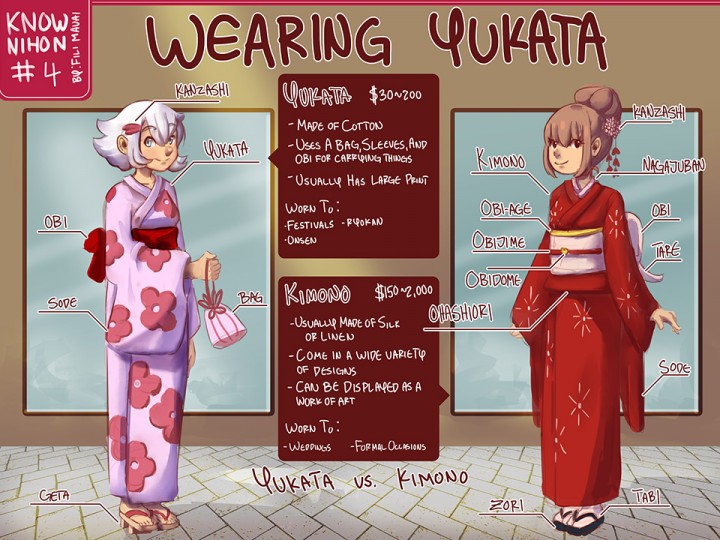
At first glance, yukata (浴衣) and kimono (着物) may look similar, but there are key differences. Kimono are made from silk and are considered formal wear, often with intricate layers like the naga-juban (長襦袢) undergarment and tsuke-eri (付け襟) collar. Their designs can also reflect social status, making kimono selection quite complex—even for Japanese people!
Yukata, on the other hand, are lightweight cotton robes originally worn at bathhouses or as loungewear. Today, they are popular as stylish summer outfits, especially for festivals and fireworks displays. From June to September, you'll see many people enjoying the season dressed in yukata.
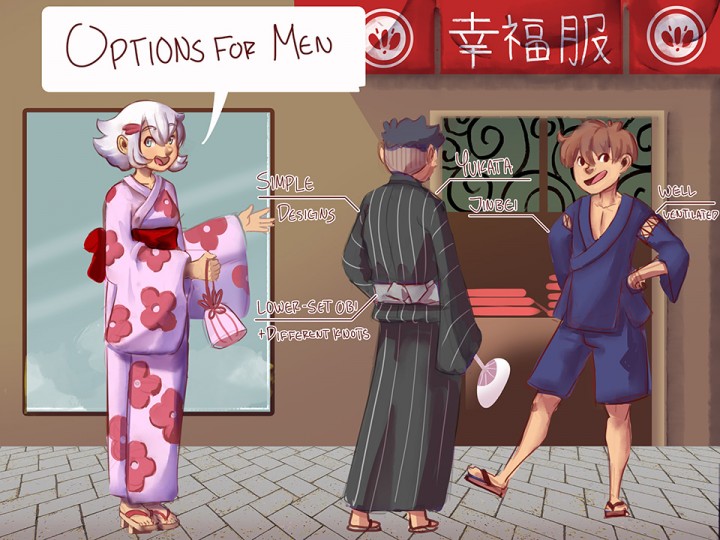
Yukata fashion is especially popular among women, with a variety of colorful designs and accessories. But men can wear yukata too! While men's yukata tend to be simpler in style, they can still look elegant and even channel a samurai-like presence when worn correctly. The belt, or obi, is tied low, and just like a necktie, there are several ways to knot it. Men also have another option: the jinbei, a shorter, more casual traditional outfit perfect for summer.
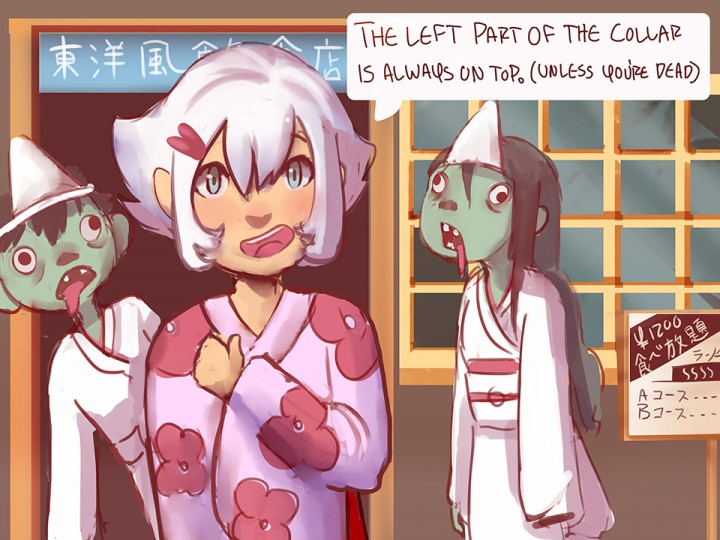
• Always wrap the left side over the right! The opposite is reserved for dressing the deceased, so take care not to make this mistake.
• Ensure the yukata fits snugly at the chest for a neat appearance.
• Tie the obi tightly and stand tall to maintain good posture.
• Traditional wooden sandals called geta are worn with yukata. If geta are uncomfortable or unavailable, simple sandals are fine—but avoid sneakers, shoes, or heels.
If you need more detailed instructions, many online videos can guide you through the process.
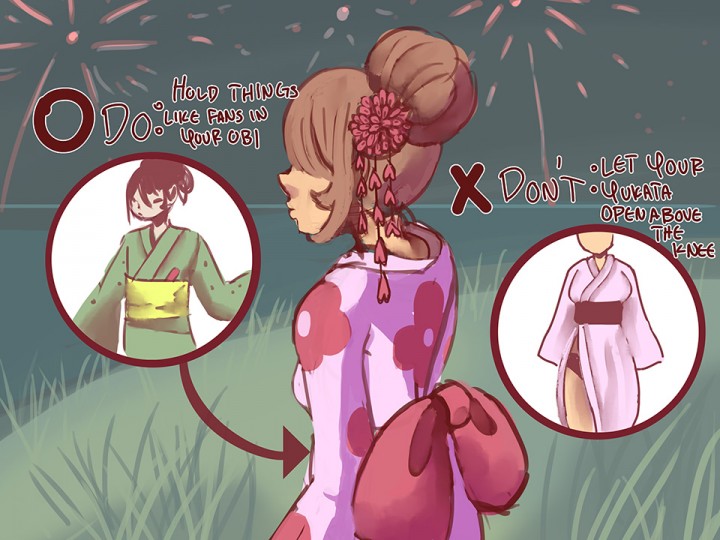
• For women, wearing your hair up to expose the nape of your neck is considered stylish and subtly alluring. In Japanese fashion, a graceful, straight silhouette is preferred over a curvy one.
• A small sensu (folding fan) tucked into the obi or a tiny purse carried within the lapels adds an elegant touch.
• Yukata embody a refined and graceful aesthetic, so posture and movement matter. Avoid casual postures like sitting cross-legged or resting your chin in your hands.
• A little leg exposure is fine, but be mindful that your yukata doesn’t open too high above the knees, as this is considered improper.
• If you're new to wearing yukata or geta, take your time walking—running can easily lead to tripping!
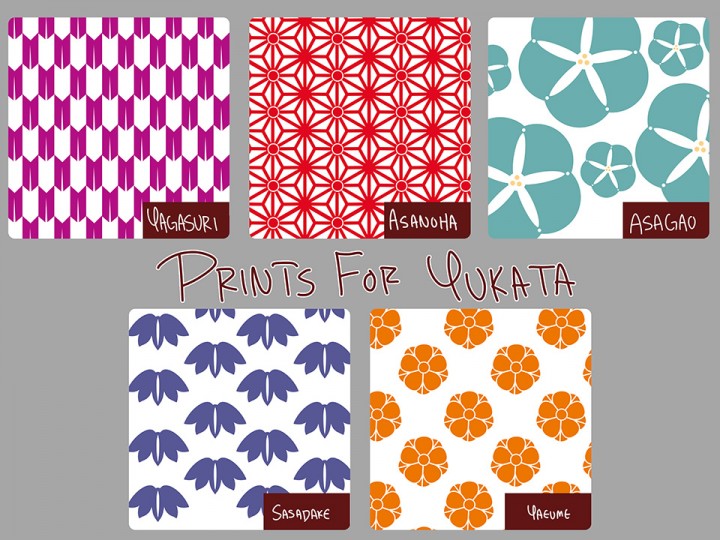
When purchasing a yukata, be cautious of non-traditional designs that may look out of place. Authentic Japanese yukata feature classic patterns, many of which hold cultural significance. Exploring different options can be a fun part of the experience!
Enjoy finding the yukata that suits you best!
Kimono is the traditional Japanese clothing that is widely recognized abroad, but many people may not be as familiar with yukata. Since kimono are formal and expensive, yukata serve as a more accessible and practical alternative. Perfect for summer festivals and events, they are much more commonly worn for casual outings. Additionally, their affordability makes them a great option for souvenirs or gifts. Enjoy strolling summer festivals such as Awa-Odori in Koenji and Tanabata in Asagaya while wearing yukata. You will see that it is a very common custom, and you’ll fit in just fine!
Kimono and yukata are essential parts of traditional Japanese fashion, each offering a unique cultural experience. While kimono are formal and often reserved for special occasions, yukata are lightweight, casual, and perfect for summer festivals, shrine visits, and evening strolls. Their affordability and comfort make them a popular choice for both locals and visitors, allowing anyone to embrace Japanese tradition effortlessly.
Yukata season runs from June to September, with a variety of designs available in specialty stores and station shops throughout Tokyo, including in Suginami Ward. Areas like Ogikubo and neighboring Kichijoji offer a mix of modern boutiques and traditional shops where you can find the perfect yukata set. A standard set, including the robe and obi belt, usually costs under 10,000 yen (less than $100 USD), and wooden geta sandals can be added for a complete look.
For those unfamiliar with wearing yukata, coordinating colors and accessories enhances the overall aesthetic, while an easier-to-tie sanjaku-obi simplifies the dressing process. To fully immerse yourself in the experience, consider capturing photos in picturesque locations such as local shrines, summer festivals, or the nostalgic alleyways of Asagaya. Whether purchased as a souvenir or worn for an event, the yukata remains a timeless symbol of Japanese culture and summer fashion.
[updated March 2025]
Illustrations: Fili Mauai
Text: K. Tezuka
Translation: Greg








